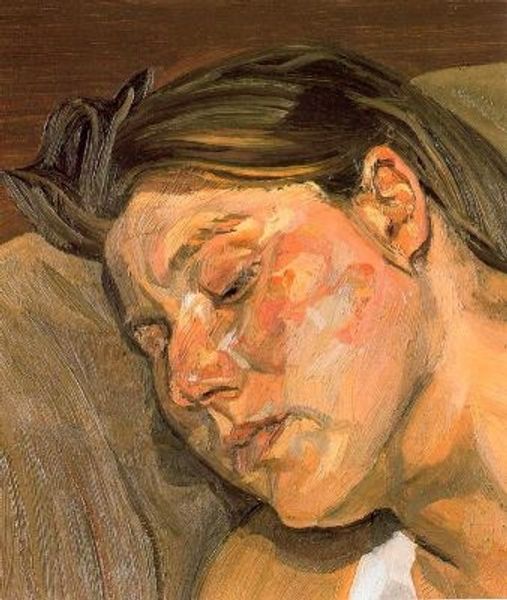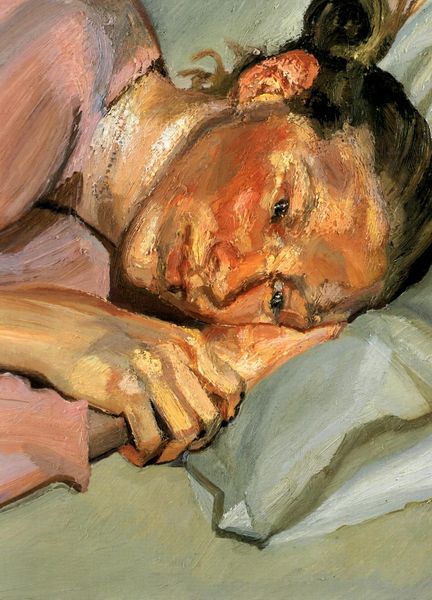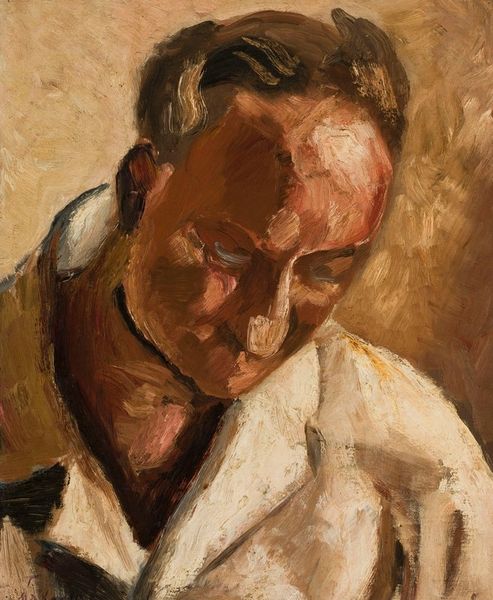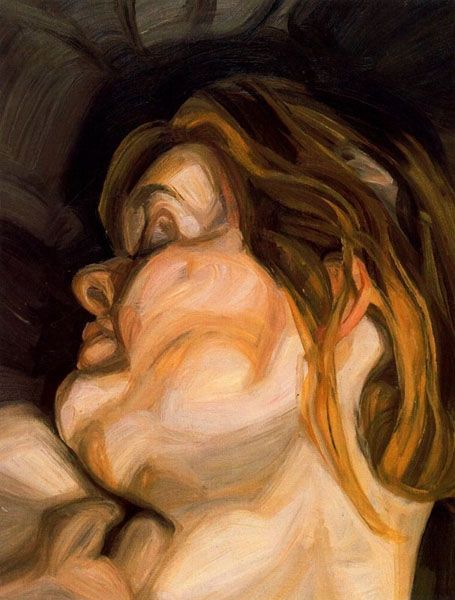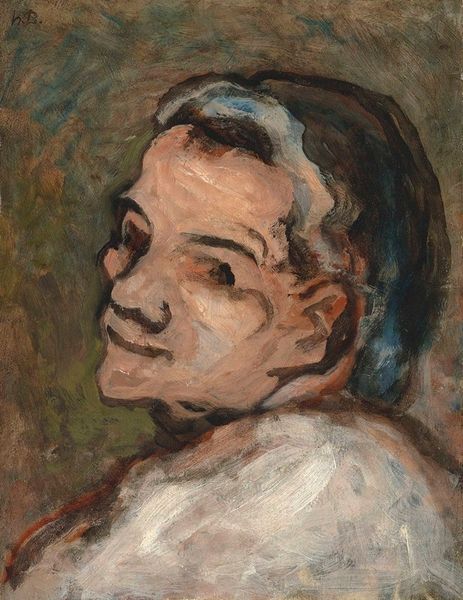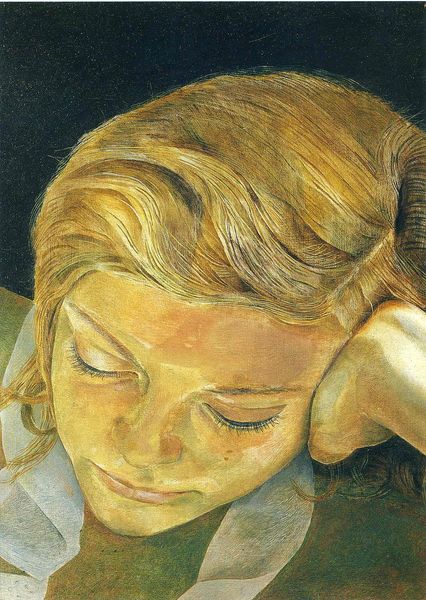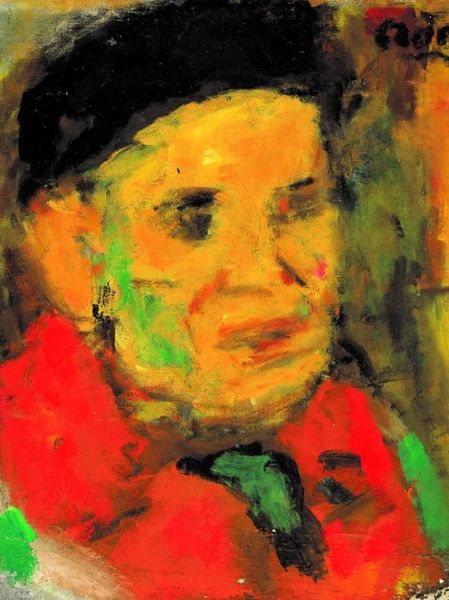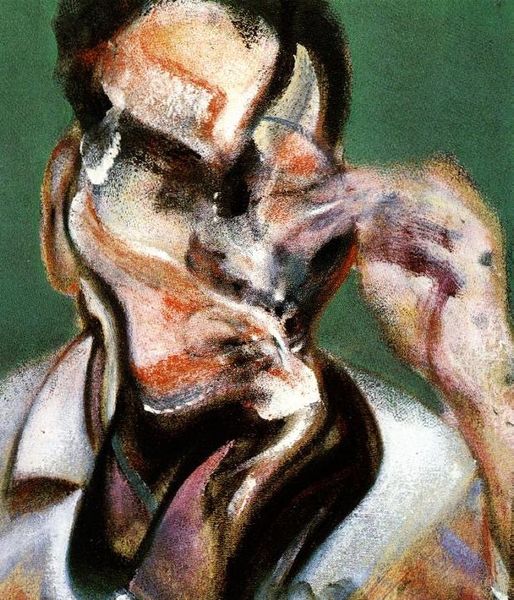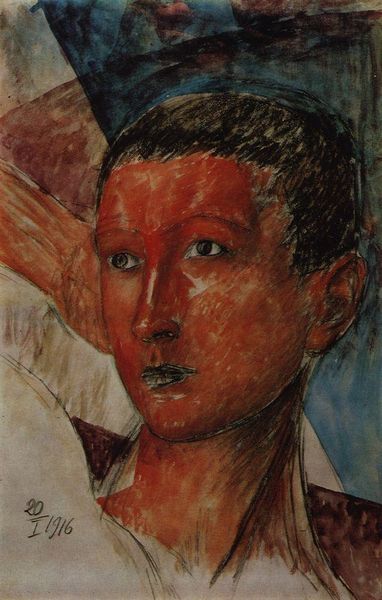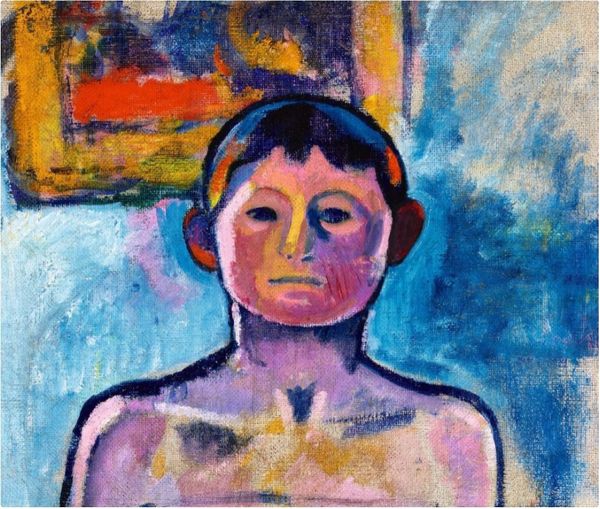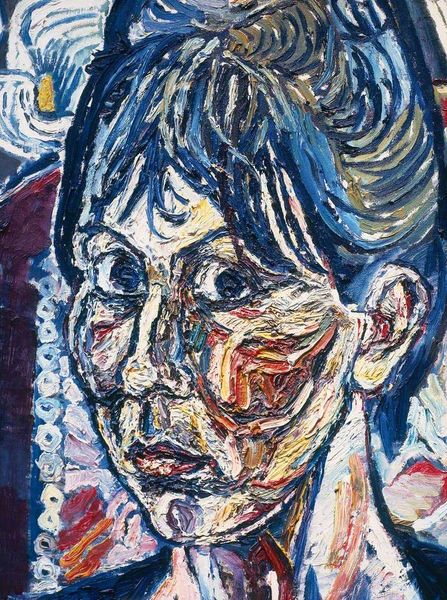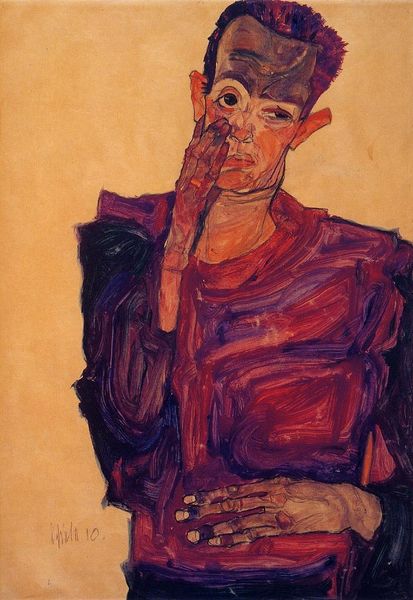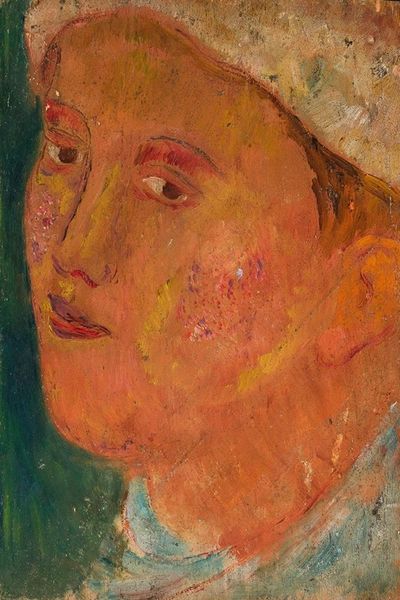
oil-paint
#
portrait
#
head
#
face
#
portrait
#
oil-paint
#
school-of-london
#
figuration
#
portrait reference
#
portrait head and shoulder
#
animal portrait
#
animal drawing portrait
#
nose
#
portrait drawing
#
facial portrait
#
forehead
#
portrait art
#
female-portraits
#
modernism
#
fine art portrait
#
realism
#
digital portrait
Dimensions: 30.7 x 35.6 cm
Copyright: Lucian Freud,Fair Use
Curator: Here we have Lucian Freud's "Annabel, portrait III" from 1987. Freud, of course, is a key figure in the School of London. Editor: It's immediately striking, the sheer weight of the paint. You can practically feel the artist working and reworking the surface; the physicality of it is quite imposing. Curator: Freud was always fascinated by the materiality of flesh and the body. His portraits often convey a brutal honesty, an unvarnished depiction of the sitter. This work highlights that. What do you think about the public perception, and this style as social commentary? Editor: I see what you mean, but his interest was always more material than symbolic; the focus remains on how form is rendered through layers of oil paint. Consider his brushstrokes, like a craftsman meticulously layering his medium and really paying attention to all of the labour that gets placed on the sitter in each session. This portrait style moves beyond class. What is the experience of those long sittings for the creation of artwork? Curator: Yes, his focus was not to capture fleeting emotions, it was more about documenting human experience. Also, his patrons must have felt as though their place in history was marked because the process in creating such a physical manifestation makes a difference and almost immortalizes them in such a physical way. Editor: Immortalization perhaps, but certainly an acknowledgement of process. It also pushes boundaries between what is considered art, in a gallery versus, craft through tangible media like pottery. The focus really falls on a person through a meticulous artistic effort. Curator: I see your point. Freud, in his unflinching gaze, perhaps democratizes the painted portrait and its subjects and pushes this boundary you discuss between "high" art and more practical and grounded work. Editor: I think so. We can consider this type of labour through Freud's portraits, as they force an intimate encounter with the realities of the medium. Curator: Indeed, a potent mix of social context and raw material. Editor: Precisely, now that's a legacy rooted in the stuff of life!
Comments
No comments
Be the first to comment and join the conversation on the ultimate creative platform.
